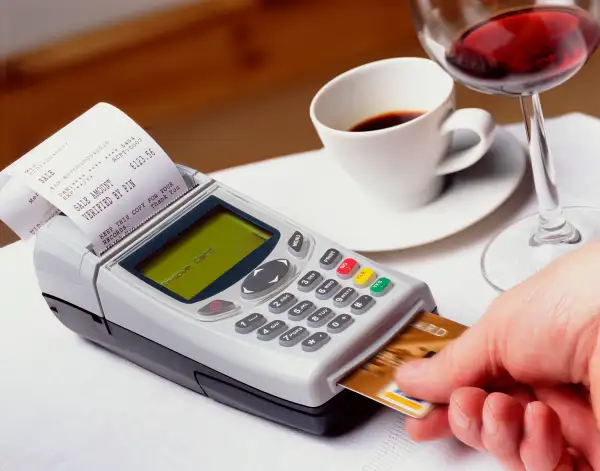Why You Should Stop Complaining About Those Chip Credit Cards

Chances are you now have a chip-enabled credit card, which means you have to dip it into a a different card terminal when you make a purchase. That's because a year ago MasterCard and Visa implemented a liability shift, making whichever entity had the lesser technology—the bank or the retailer—responsible for bearing the costs in the event of fraud. As a result, banks starting shipping out cards with chips, and retailers began installing special terminals to read them.
Many cardholders, though, are unhappy with the new arrangement, and have taken to Twitter and other platforms to voice their opprobrium, which generally falls into two categories: chip-based transactions take longer, or they don't work at all. Based on social media, you'd think there's a rebellion bubbling beneath the surface, ready to Make Credit Card Payments Great Again.
Perform a Twitter search with the keywords "Chip Cards" and "Hate," and here's a small sampling of what you'll find:
(To answer Jenna: chip cards were invented by Roland Moreno, he was French, and he's now deceased. You can hear his story on a recent episode of Planet Money.)
To be fair, EMV (the official name for the chip standard, short for Europay, MasterCard, and Visa) transactions do take slightly longer than simply swiping your card. Planet Money calculated that terminals took six to 15 seconds to read a chip card, versus less than a second for a magnetic card.
Perhaps the more frustrating hurdle is confronting a terminal that doesn't work at all. There are two million active chip-reading terminals, a whopping 486% increase since the liability shift occurred last October, according to data from MasterCard. That said, two million merchants represents only a third of all U.S. retailers.
So there's a good chance you've dipped your card, only to be told to swipe it. According to a recent NerdWallet survey, 39% of people felt annoyed and 32% were frustrated when the reader didn't work properly.
The Truth About The Hatred
The Nerdwallet study revealed something else: The vast majority of consumers view chip-based transactions favorably, and more people would rather use a chip card than swipe a magnetic strip. Nearly 80% of borrowers said they felt positively about chip cards, and almost half said they believe that consumers benefit from the improved technology.
Even when things don't go as planned, most people don't get too terribly bent out of shape. Two in five are indifferent when the reader doesn't do what it's supposed to, while another 24% said they are amused.
Perhaps that's because they know the truth, which is that while you have to wait a touch longer to pay for your takeout or coffee, EMV technology has significantly reduced in-person counterfeit fraud. MasterCard found that this type of fraud went down 54% from April 2015 to April 2016 among businesses that have adopted the new readers or were close to doing so.
Less fraud means fewer calls with your credit card company over unauthorized payments, and less inconvenience while you wait around for a new piece of plastic to arrive in the mail.
Generational Divide
In the NerdWallet survey, every generation preferred chip cards to magnetic strips—except for one.
Ironically, it's millennials, ages 18 to 34, who are are having the hardest time with the improved technology. Young cardholders take the most umbrage when they go to dip and are then told to swipe, or vice versa. More than half are annoyed when the reader informs them of their error, compared with 39% of Gen Xers.
Read next: Why Fraudsters Love Millennials
Part of this may have to do with friction. Millennials are used to new technologies making life easier—think Uber for cabs, Seamless for food delivery, Betterment for investing. The expectation is that the new new thing will reduce time.
EMV, as we know, is the opposite. It’s an improved system that slows the process down.
But while millennials are fuming at the checkout counter, they should remember that this new thing makes them less susceptible to credit card fraud, at least in person (online fraud is another matter). If nothing else, that's worth a little extra patience.
